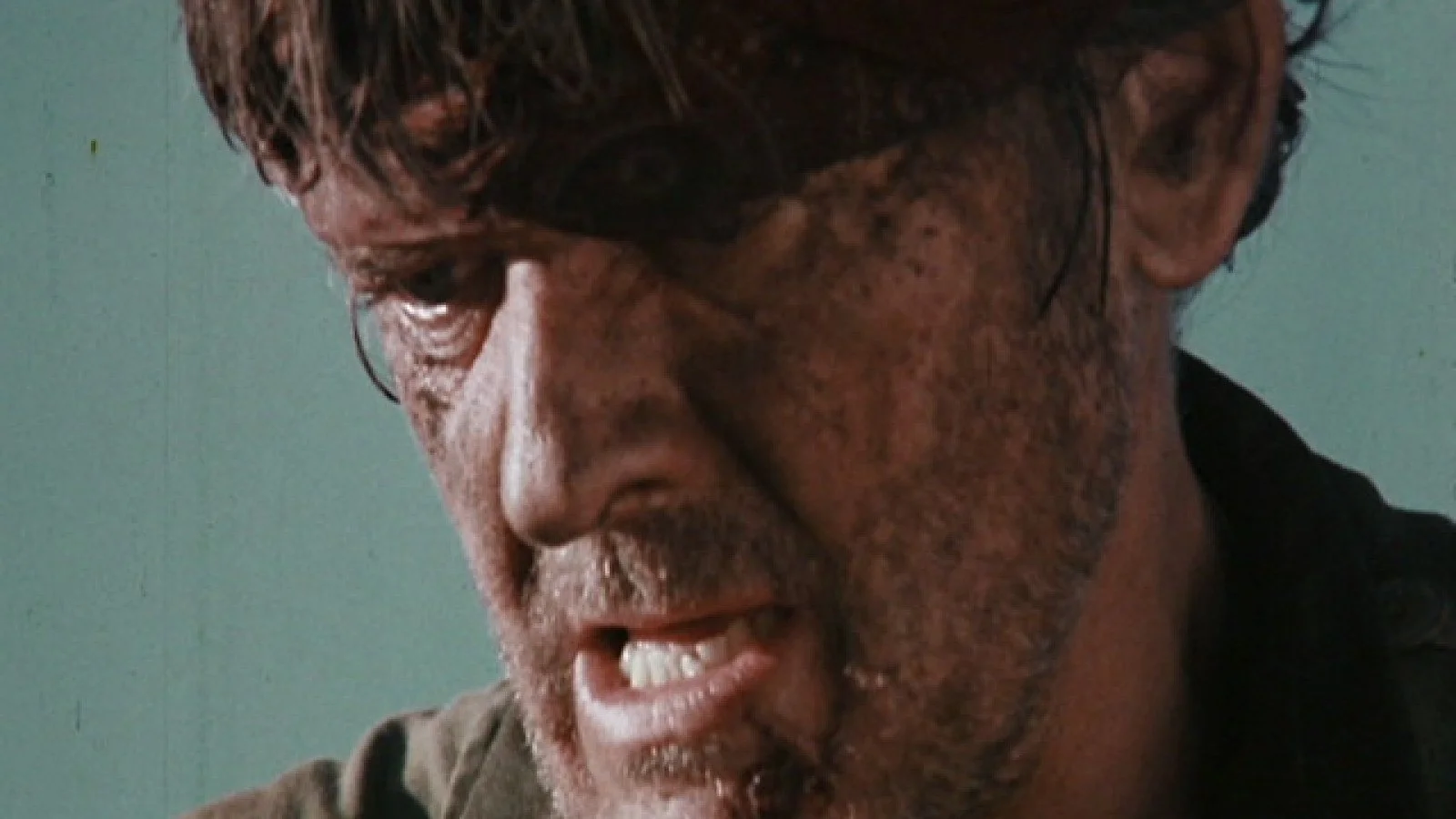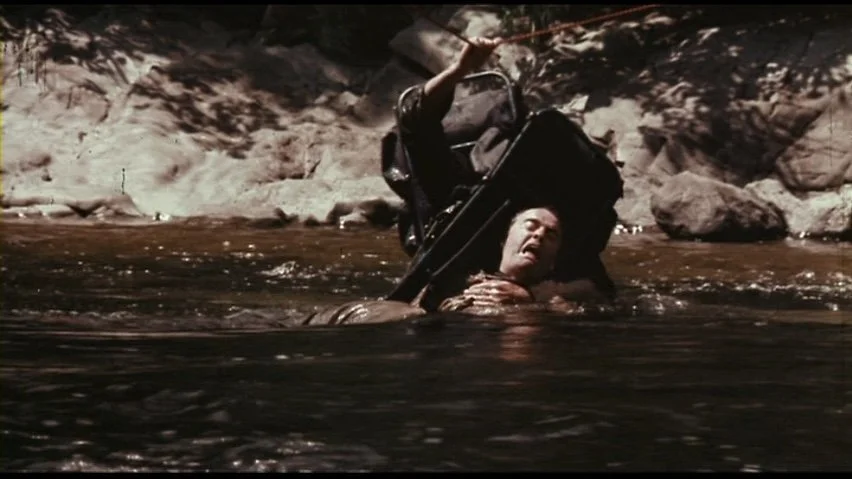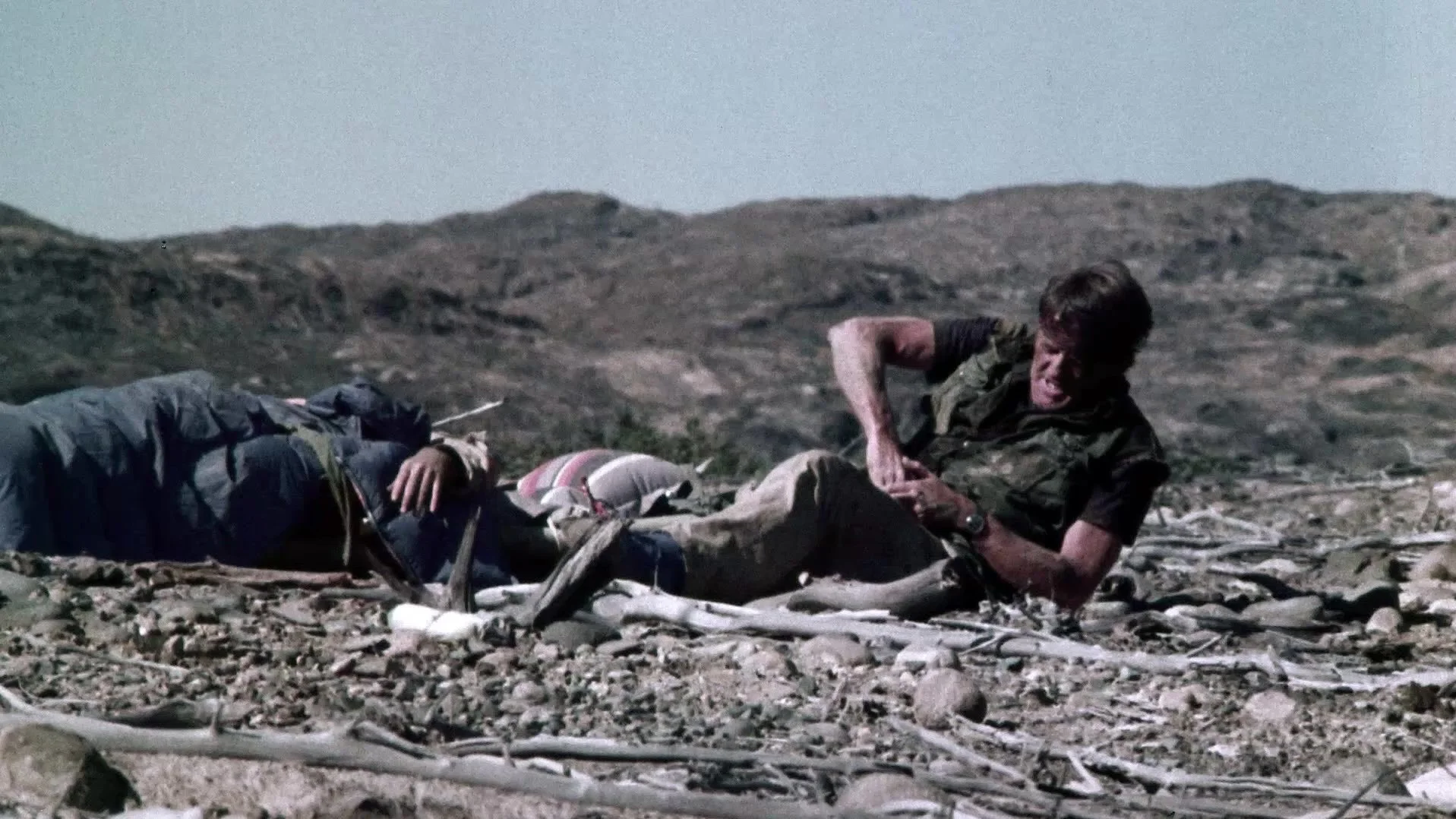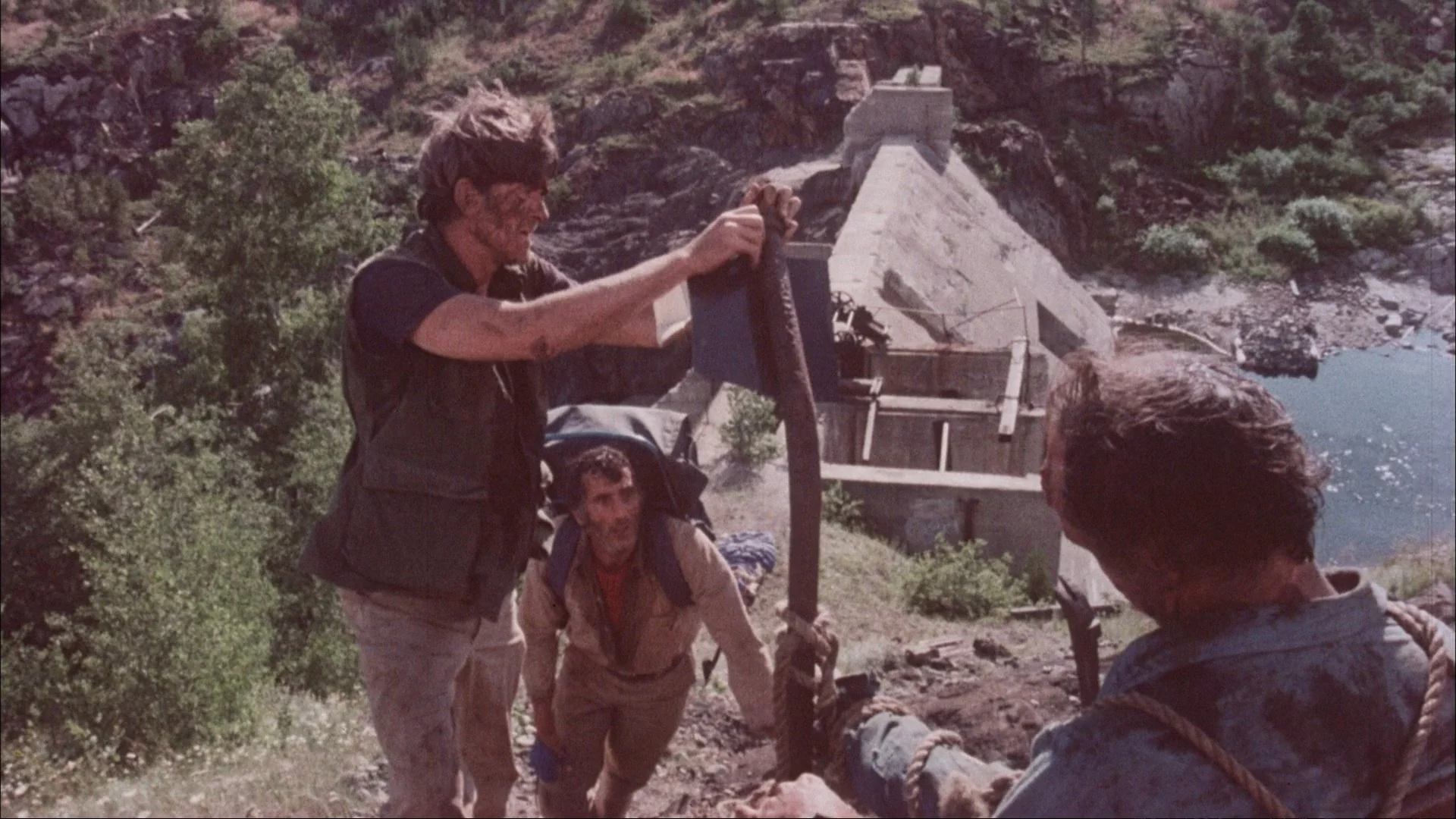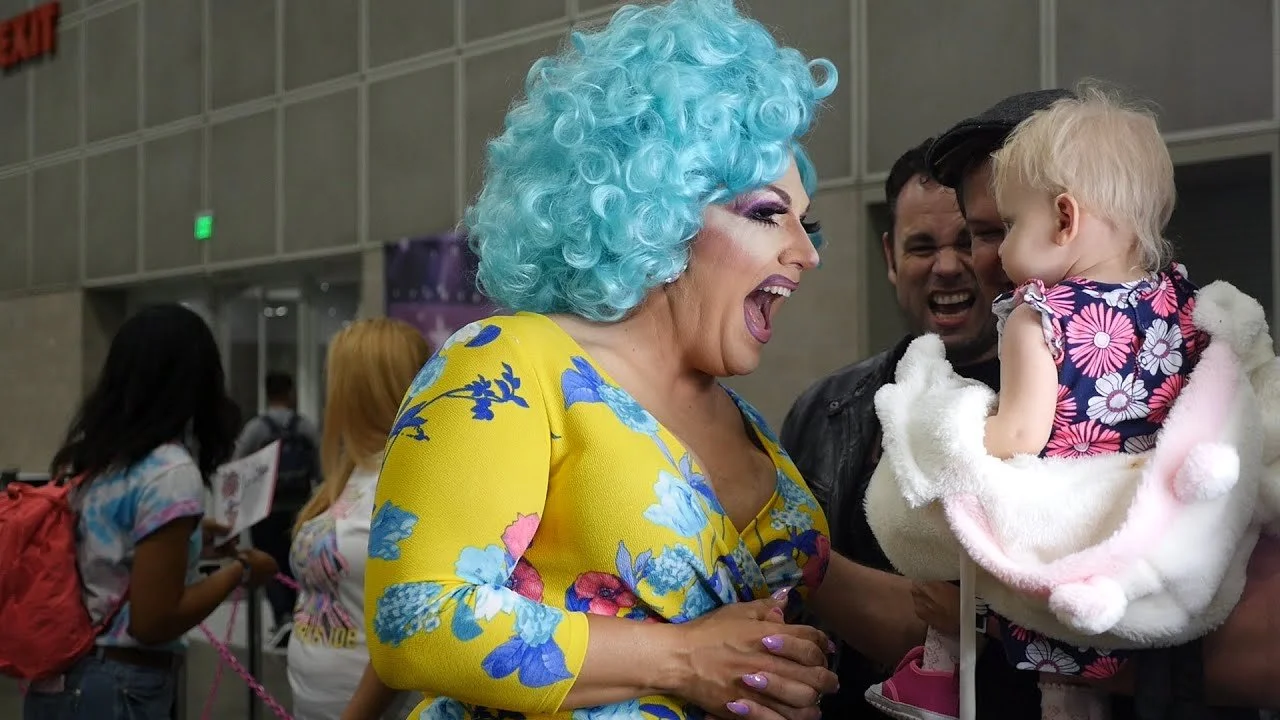Danse Macabre #4: Film Review — "Rituals" (1977)
In 1981, Stephen King published Danse Macabre, a work of non-fiction wherein the author acts as a tour guide through the history of horror. He addresses the social issues and political conflicts that have influenced creators over the years, and the ways creators have influenced each other.
King closes out the volume by recommending 96 films and 113 books released during the 1950-1980 period that he feels have significantly contributed to modern genre fiction. With this Fearsome Queer column, I’ll be making my way through those titles in no particular order.
When I initially perused the movies of Appendix I, Rituals immediately jumped out for one glaring reason. If you drag a finger horizontally across the page from the title column to the director column, you’ll see that Stephen King cites “?” as the director. Why would King put a single question mark in place of a name? Does the film not have credits? Did the trades not list a director? Is it… a snuff flick??? No, none of that. Turns out, King simply didn’t know the director at the time of Danse Macabre’s publication (and nobody at the publishing house bothered to look it up)! Ergo, long before I had answers to my questions, I had a burning desire to see this mysterious film. Problem was, it’s kinda difficult to find—legitimately and for free-ish. Thankfully, when I opened Shudder earlier this week, I learned that my favorite streaming platform had once again come through!
Shudder can always be counted on to give a home to small pictures from decades past that didn’t get a wide American release in their day. So, yes, while Shudder is a miracle of a streamer for horror aficionados, I wonder if Rituals would have even been on their radar had it not been for Danse Macabre keeping it alive all these years. Perhaps, perhaps not. But, regardless, it won’t be on there forever—so if you’re reading this, log on and check it out if you still can. If you’re on the fence about carving out 100 minutes for this movie you’ve probably never heard of, please allow me to tell you why you ought to.
In Rituals, five male physicians if their 40s, who used to be buddies in their med school days, reunite to go on a wilderness expedition in the wilds of Ontario. A character piece through and through, so much of the first chunk of the story is dedicated to these pals just being pals—making dick jokes and roasting each other—well before anything remotely unsettling occurs. Then, as developments become incrementally stranger, we understand why they might continue to stubbornly blame one another, as opposed to suspecting that something more nefarious is actually afoot. It’s no wonder King favors this film; this is his playbook. Few authors craft arrogant middle-aged men who discover the error of their ways just a tad too late quite like King.
Apologies for the easy comparison, but Rituals is like if Deliverance were a survivalist slasher from Canada. To say it’s a straight-up rip off of Deliverance (as some critics do) is a shallow take, though. The films have a similar setup and mood, sure, but Deliverance is about the effects of extreme sport and warfare on modern masculinity, whereas Rituals is about civilized society’s utter disregard for the wellbeing of its most vulnerable—although that part is not clear right away, since the identity of the antagonist is shrouded for most of the runtime. Both movies do feature men coming to terms with their nature while being pushed to the limit, but only one features a deranged booby trap-setting murderer with a vendetta…
Making excellent use of dramatic irony, we, as the audience, understand fully in advance of the doctor bros that someone is lurking in the woods, watching them, following them, fucking with them. Killing them one by one when the time to strike arises. For as harsh as this film is, be that as it may, it’s relatively gore-free. Even though there’s very little visible bloodshed, the awful things that happen are still difficult to watch. It’s the performances that sell it. The entire cast is fantastic. Each actor renders their character with a type of grit rarely seen outside the 1970s, and their relatable appearance lends a feeling of familiarity. We even get a casually queer character who isn’t defined by his queerness; it’s merely a detail. It’s also refreshing that he’s just a normal-looking dude. Remember when actors looked like everyday schmoes you’d see in line at the DMV?
Hal Holbrook, the handsomest schmo, is brilliant in a leading part that I can’t imagine was any fun to shoot. Harry, his character, is a demanding role—it’s both physically grueling and mentally draining by design. And he’s perfect for it. The recently departed Hal Holbrook was a selfless, chameleon-like performer. He didn’t so much transform for his parts as he did masterfully adapt to fit a film’s vibe, without pulling focus. This skill of his made Holbrook a consummate supporting player, howbeit here in Rituals he’s our main guy. Sandwiched between Academy Awards darlings All the President’s Men and Julia, Holbrook does not attempt to turn this into a star-making vehicle. He instead delivers an honest and resonate portrayal that’s always grounded and never flashy, vis-à-vis the movie.
Like our hero, Rituals is innately layered. The film has a palpable texture; its grainy stock evokes the ruthless terrain of the setting and frequently reminds us of the wanton cruelty wriggling in the film’s underbelly. With dingy yellow-ish brown tinges that add a sense of desolation to an otherwise picturesque landscape, it’s impossible to divorce this aesthetic, in relation to such surroundings, from the footage of America’s war in Vietnam, which had only “officially” “ended” less than two years prior to production. Although the Canadian government never formally entered into the conflict—positioning itself as “neutral”—the ramifications of the war were far-reaching, with lasting geopolitical and cultural consequences. Filmmakers worldwide couldn’t help but visually adopt the barbarity of what they were witnessing play out on TV.
The war permeated narratives, too… Every war has casualties, military and civilian—with many survivors left disabled or disfigured for life. ’Nam was especially notorious for this, so I’m sure it was on the minds of the crew. Whose minds it was not on, it would seem, is most of our characters. A lot their early banter reveals feelings of judgment toward certain patients, a laid-back disregard for ethics, and vague admissions of malpractice. And who’s to say what their adversary overheard in the lead-up to the savage murders? I admire Ritual’s willingness to match its villain’s fiendish spirit. The root of the killer’s wrath is slowly unveiled with a new clue as each insensitive physician meets his demise. Director Peter Carter (née “?”), like many of his contemporaries, expertly tapped into the fiery climate of the era to create something truly unique. It’s too bad some people can’t see beyond their own false equivalencies to a predecessor of a similar vein.
